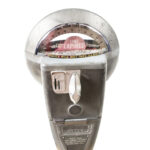When pets go to work
Happy staff are productive staff. The issue, however, is often in finding the right mix of happiness with productivity. Aaron Waters reckons he has one answer to making your workplace more productive – pets.
Happy staff are productive staff. The issue, however, is often in finding the right mix of happiness with productivity. Aaron Waters reckons he has one answer to making your workplace more productive – pets.
When Jay arrives at work you can not only see the smiles broaden on his ‘colleagues’ faces. There’s always a lift in spirits too.
Jay is a Jack Russell terrier; at 15 years old no spring chicken but still a very welcome staff member at Auckland-based PR consultancy Pead PR (see case study).
Jay has his own bowl in the kitchen and his bed is tucked neatly behind his owner’s desk in the open plan office. Passers-by greet him by name and ask if he’s having a good day.
Increasingly business owners are recognising the benefits pets bring to busy offices. Pead PR has its ‘doggy day Friday’, but pets – mainly dogs – are welcome at any time in the company’s Mt Eden premises.
Pets in the office are increasingly popular too with workers. Here at PETstock we recently surveyed our customers asking how many have taken their dog to work. Turns out one in four have. And, anecdotally, pets at work seem to be on the increase.
So what are the benefits to workers in having a pet-friendly office?
Pets are known to reduce stress, loneliness, depression and anxiety. That’s why they are popular visitors at retirement villages and hospitals, especially when there’re children involved.
They also have a calming influence on groups of people – having a pet in the workplace can encourage staff to be more relaxed, more sociable and more accepting of others.
Office dogs can help visitors and customers connect with staff, often becoming a great conversation starter and boosting creativity. There’re not many things better than a swift 20 minute lunchtime walk to clear the mind.
What’s in it for the pets? Plenty it seems.
Naturally a workplace pet often enjoys more attention and mental stimulation than a pet that stays at home during the day. More hands make for more playtime and cuddles. But that’s not to say it’s still important that the pet’s health and wellbeing needs are met throughout the workday.
So, if you’re going to let staff bring their pets to work there’re some rules and standards you’ll have to set with regard to pet etiquette. To that end you may want to set up a pet register on your company server which staff can use as a prompt.
Here is some guidance to consider as a business manager:
- Ideally, each pet should be microchipped with the registration up to date.
- Pets should have clear identification – preferably a collar with an ID tag that has their name, address and phone number clearly visible.
- f you have multiple pets visiting at one time, introduce them carefully to ensure they’re compatible with each other.
- Consider an alert sign for visitors who may be allergic to, or fearful of, cats or dogs.
- Do not feed the pet any human food, leftovers or titbits – they can be annoying to other staff with their begging and it can also cause them to become ill.
- Pets have needs throughout the day: vet visits, walks, topping up food and water. Are you happy for your people to spend time meeting those needs?
Naturally you will want to ensure the pets your staff do bring to work are well-trained, properly toilet trained and generally OK to hang out with a group of people.
Pet essentials
So, if the boss says it’s OK and you’re taking Fido or Felix to work, what do you need to take to ensure the pet feels at home?
This is where cats and dogs differ slightly. Both need access to premium quality food and clean drinking water. Each also needs its own bed and a quiet, darker place to rest if it feels stressed or overstimulated.
For Felix, you’ll need a litter tray, preferably two and each in a different room in case the cat is spooked by something in one room and needs to flee to another. You’ll probably also find it easier if you transport the animal in a large cat carry case.
Fido, on the other hand, will need a leash and collar or harness for walking. But the dog also needs access to an outside area for toileting – and don’t forget the toilet bags.
Pets in the office are a privilege for pet owners and showcase a community company culture for owners and managers. They can improve company morale and inspire joie de vivre. Of that I have no doubt.






